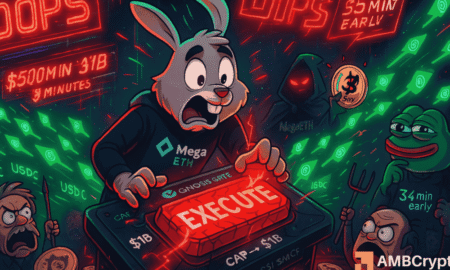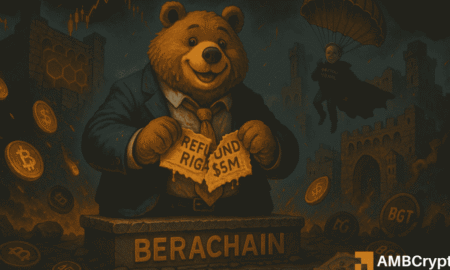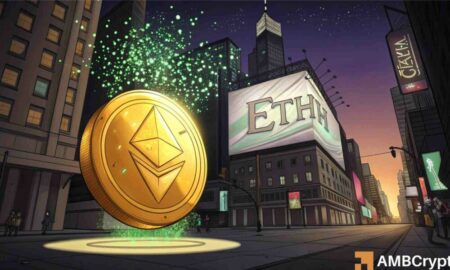Understanding Solana’s Inflation Reduction Proposal: Key Takeaways and Insights
The Solana blockchain, known for its speed and efficiency, is currently facing an ongoing debate regarding its inflation rate. A new proposal, dubbed the “Double Disinflation Rate” or Solana Improvement Document (SIMD)-0411, aims to significantly decrease the current inflation rate from 4.5% to just 1.5% over the next three years. This transformation is set to double the existing disinflation rate from 15% to 30%, marking a pivotal moment for the ecosystem. As analysts and community members weigh in, the potential impacts and outcomes of this proposal reveal much about Solana’s future in decentralized finance (DeFi).
The Goals of the SIMD-0411 Proposal
The main objective of the SIMD-0411 proposal is straightforward: to mitigate inflation by reducing the annual inflation rate in an effective manner. By increasing the disinflation rate to 30%, the proposal hopes to effectively take control of the SOL supply, ensuring economic stability and enhancing investor confidence. Currently, the fixed disinflation rate of 15% indicates that, without intervention, the inflation could only decrease to 2.5%. By aiming for a robust 30% reduction, the proposal could significantly lower the inflation level to 1.5% by 2026. Such a reduction would minimize the long-term concerns about supply dilution, potentially stabilizing the SOL token’s value.
Potential Short-Term Implications for DeFi Yields
The proposal has drawn mixed reactions, particularly regarding its impact on DeFi yields. Critics, such as analyst Ignas, have raised concerns that the proposed changes could lead to diminished DeFi returns, especially through liquid staking tokens (LSTs) like jupSOL. Ignas’s viewpoint reflects a common concern in finance: if the yields diminish, it might deter investors from maintaining their positions in both SOL and LSTs. While the long-term approach focuses on sustainability and market health, the short-term repercussions could discourage participation in DeFi, posing challenges for those who rely heavily on liquidity and yield farming.
Long-Term Benefits: Stabilizing SOL and Reducing Selling Pressure
Despite these concerns, advocates for the proposal highlight its potential long-term advantages. Mert Mumtaz, founder of Helius Labs, supports the view that reducing inflation rates will lead to a decrease in selling pressure for stakers. Many stakers currently sell rewards to cover taxes and other expenses, creating a constant influx of SOL into the market that can depress prices. By controlling inflation and minimizing the rewards that need to be sold, the proposed changes could cultivate a healthier market atmosphere. The ultimate aim is not just to curb inflation but also to create a more balanced environment that benefits both stakers and long-term SOL holders.
Projected Impact on SOL Supply and Market Dynamics
If the SIMD-0411 proposal is successfully adopted, projections suggest that approximately 22.3 million SOL will be removed from the inflation schedule within six years. Given current market valuations, this reduction could represent roughly $2.9 billion in potential selling pressure. Such drastic changes could bolster SOL’s price over time, making it a more attractive asset. It’s worth noting that earlier proposals, like SIMD-228, advocating for an 80% reduction in inflation were met with resistance due to fears of adverse impacts on staking rewards. The current proposal trial aims to strike a balance, asserting that it won’t lead to heightened risks for investors.
Community Sentiment and Future Voting
Going forward, the proposal will be subjected to community voting, a critical determinant of its success. The mixed reactions within the Solana community showcase a vibrant engagement with the future of the network. As of now, with SOL trading at approximately $129—50% down from its September high of $253—community members are weighing the potential benefits against the immediate financial implications. The outcome of this vote will not only set a precedent for Solana’s economic policies but also shape the landscape of its DeFi ecosystem moving forward.
Conclusion: A Balanced Approach to Inflation Management
In summary, Solana’s SIMD-0411 proposal represents a decisive move toward controlling inflation in the SOL ecosystem. By aiming to double the disinflation rate, the proposal seeks to reduce the inflation rate to 1.5% within three years—a noteworthy strategy for long-term economic health. While short-term concerns about DeFi yields abound, the proposal’s emphasis on stabilizing the SOL token and reducing selling pressures has its fair share of defenders. Ultimately, community engagement in this decision will determine whether Solana can navigate its ambitious inflation reduction plan effectively, thus shaping its future in the DeFi space.
















